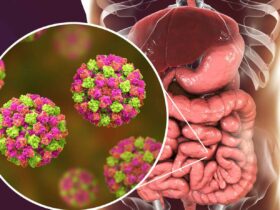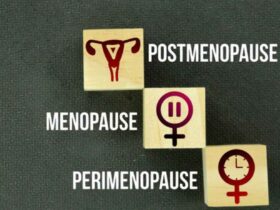The frightening Twitch is a clear symptom of more disturbing impacts on both animal species and human beings. A prion disease that is known as Chronic Wasting Disease (CWD) or the “zombie deer disease” affects deer, elk, moose, and other cervid (deer family) animals. This degenerative disease of the brain, the natural form of which remains unknown, is now quietly stopping at the north of the continent, raising concerns about wildlife conservation and may eventually even threaten human health.
Understanding Chronic Wasting Disease: A Prion Nightmare
Along with other TSEs, CWD is a form of infectious spongiform encephalopathies (ISFs). TSEs are caused by prions, which are polypeptides (proteins) that twist and misfold. They can damage the healthy brain tissue. And unlike bacteria and viruses, prions are exceptionally resilient in all harsh environmental conditions and the current decontamination methods. Being this means that it is difficult to contain the disorder after it has spread to the population.

The disease strikes at the center of nervous tissue of affected animals. The symptoms normally begin to show themselves in the early stages, but towards the end of the condition the animal starts acting aggressively or strange, loses weight, experience tremors and have difficulty to coordinate proper movements. The terminal stages are prone to cause an exceptional emaciation, with a vacant stare which gives rise to the unnerving nomenclature “zombie deer disease.”
The Stealthy Spread: How CWD Moves Across Landscapes
The exact mode of transmission for CWD remains under investigation, but several factors contribute to its spread:
- Prion Shedding: A contaminated animal can shed prions in a number of ways, such as mouth secretions, urine, feces, and others. These sources of outside infection persistently pollute the water, crops, and soil, serving as a forever carrier for the disease in the environment.
- Carcass Disposal: Turning of animals over from an infected into a dead one and insufficient encounter with them resulting in the decay can lead to the spread of diseases among the scavengers.
- Movement of Animals: Besides the migration of the animal itself, here can be placed the subject of wildlife traffic which can actually transport CWD to places far more distant.
A Cause for Concern: Implications for Wildlife and Potentially Humans
The rapid spread of CWD across North America raises significant concerns:
- Wildlife Population Decline: CWD is a sure death to infected deer, elk, and other susceptible species, whereas outbreaks of this virus can result in the population crash of these species. Therefore, both existing and new habitats are being affected and this finally leads to the tangle in predator-prey relationships as well.
- Uncertainties Regarding Human Health: While any documented case of CWD transmission to humans is not known, CJD, a human prion disease like mad cow Disease (BSE) has been known to be linked to countless other infections. The issue of human transmissibility of CWD through consumption of infected meat remains the weightiest problem to be resolved by the scientists.
Responding to the Threat: Measures to Control CWD
With no cure or vaccine currently available for CWD, wildlife management agencies are focusing on preventative and control measures:
- Surveillance and Monitoring: Monitoring the expansion of the disease through the CWD testing system of harvested animals and determining the infected regions is necessary.
- Public Awareness Campaigns: It is imperative to educate hunters and a general public on CWD, the procedures that have to be followed for the carcass disposal and the possible risks related to consuming meat of infected animals.
- Habitat Management: To reduce animal density and avoid contamination of healthy with infected animals, certain management approaches are required to slow down the course of disease.
- Research Efforts: The on-going investigations into CWD transmission pathways, prospective treatment means, and development of vaccine have to be of utmost priority for long-term management of the disease.
A Call to Action: Protecting Wildlife and Ourselves
The silent spread of chronic wasting disease demands a collective response. Here’s what you can do:
- Be Informed: Study about CWD explain its mechanism and transmission modes.You need to be aware of these possible risks.
- Support Research: If you are thinking about donating focusing on those organizations that carry out researches primarily on CWD therapy and control methods may be a good choice.
- Hunt Responsibly: Go along the CWD testing regulation of your hunting zone and dump carcasses in an adapted way.
- Practice Safe Consumption: Breast cancer is the second leading cause of death among women in the United States after lung cancer. Cancers among women have multiple subtypes such as breast, uterine, and ovarian cancers, each with its own cancerous growths and gene expression patterns.
One of the latest viruses that endanger wildlife and human health is the Chronic Wasting Disease, and this should be a wakeup call for a world linked by the interaction of ecosystems and the resulting threats to ecosystem fragility. Through cooperation, the diligent task of wildlife agencies, scientists, hunters, and the public at large may define controlling this disease, reducing its contagion, and in the end, keeping our wildlife populations healthy and preserved.















Leave a Reply